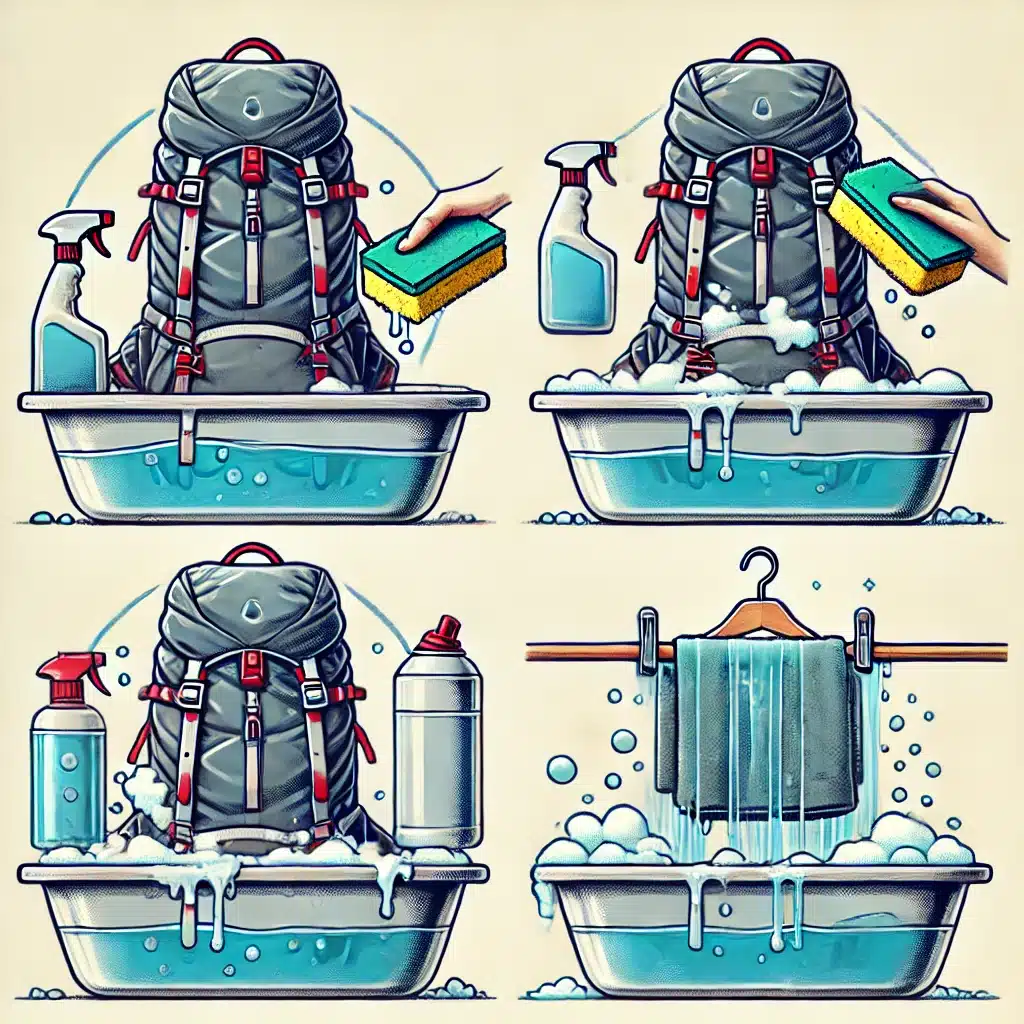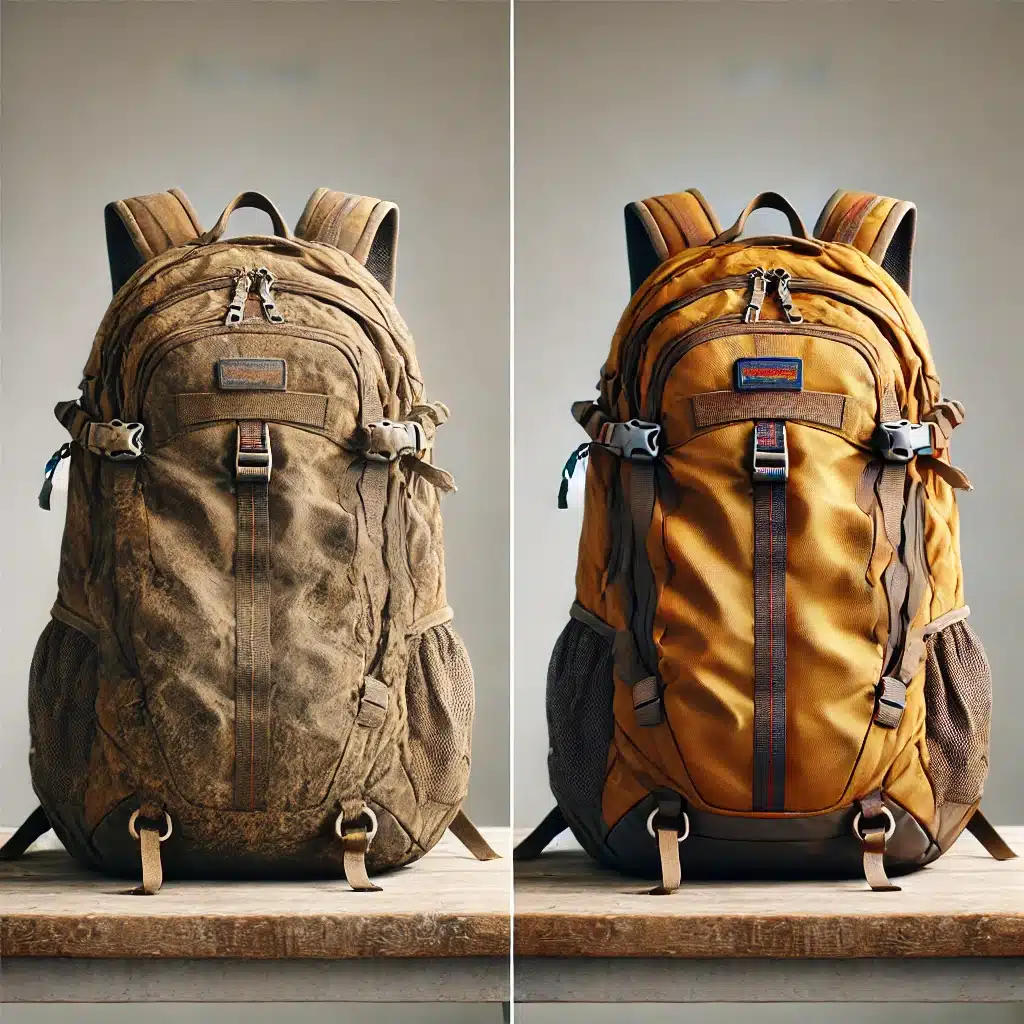Your backpack gathers dirt, sweat, and stubborn odors after an exhausting hike. It can feel dirty with mud stains, sticky zippers, and musty smells. However, washing a backpack is not the same as just tossing it into the machine. Improper methods can damage the waterproof coating or fade the fabric. Even after a thorough scrub, some smells and stains may persist. Your backpack, after all that washing or maybe losing shape as it dries, may be one of yours. You surely know the problems a poor wash can create-a dirty backpack gathers bacteria that will irritate your skin. Fret not; with this guide, you shall keep your backpack clean and get rid of the stains on it while it will remain in excellent condition for as long as you want it to. Whether you’re soaking in a tub, rinsing in one, or scrubbing the straps, we’ve got expert tips. Ready to revive your backpack? Let’s get started!
Why You Should Wash Your Backpack Regularly?
Your backpack picks up dirt, sweat, and grime. This can weaken the material and cause bad odors over time. Bacteria can grow on your backpack if you do not wash it. This can cause stubborn stains and clogged zippers. A dirty hiking backpack can irritate the skin. In particular, sweat and oils accumulate around the shoulder straps. To clean your backpack, use a sponge and warm water. The dirt should be removed using a soft scrubber without damaging the fabric. Avoid using a washing machine unless the label says it’s safe, as it can harm the structure of your backpack. Instead, fill a bathtub or tub with soapy water. Let it swish, then wash it. Rinse well to remove any detergent. After cleaning, dry it in indirect sunlight or use UV exposure to kill bacteria. Always clean your pack before storing your backpack to prevent mildew and odors.
- Prevents bacteria buildup and odor
- Keeps zippers and fabric in good condition
- Avoids damage from improper washing machine use
- Extends the life of your backpacking gear
- Ensures freshness before storing your backpack
Why Your Backpack Smells Bad: Understanding the Stink Problem?

A smelly backpack isn’t irritating; it means bacteria, mold, or sweat have built up. Outdoor adventures, spilled drinks, and forgotten gym clothes leave a smell. It sticks to your backpack and is hard to get off. If you don’t clean it often, the smell gets worse. This makes it unpleasant to carry. But don’t worry! With some expert advice and the right cleaning approach, you can freshen it up in no time.
Common Reasons Your Backpack Stinks
The largest cause of odor is when sweat and moisture get trapped within the fabric of your pack. Sweat drips into the hip belt, shoulder straps, and back panel, especially on hot days. If left moist, the bacteria feed and create a very bad smell. Food stains, mud, and damp storage can also make your large backpack smell worse over time.
How Bacteria and Mold Make Odors Worse?
Leaving your pack in a bathtub or storing it damp can lead to mold and mildew, which release a musty odor. Using the wrong cleaning method can leave a detergent residue. It can trap bacteria instead of removing them. To avoid this, give your backpack a thorough wash and a good rinse before drying it completely.
Can Washing Remove All Bad Smells?
Yes, but only with the right steps! Use lukewarm water, mild soap, and a sponge to clean your backpack properly. Remove dirt with a soft touch. For deep cleaning, fill a bathtub with 6 inches of clean water. Submerge your pack and let it soak for a few minutes. Don’t forget to focus on the hip belt and high-contact areas. After washing, always air dry in a well-ventilated space or under indirect sunlight, as UV exposure helps kill lingering bacteria.
Key Considerations:
- Sweat and moisture encourage bacterial growth.
- Food stains and dirt worsen smells.
- Poor drying leads to mold and mildew.
- A thorough wash with proper cleaning products eliminates odors.
- Sun-drying and UV light help keep your pack’s fabric fresh
The Right Way to Wash Your Backpack Without Damaging It
It makes sure your backpack lasts longer and stays fresh for every adventure. However, cleaning it in the wrong way might weaken the backpack material, damage the PU coating, or break the zippers. Be prepared for that long thru-hike, or simply want to refresh your daily pack-you should learn how to clean it properly without damaging it.
Can You Put Your Backpack in the Washer?
Not all packs are machine-washable. Use a gentle cycle with fresh water and mild detergent. Avoid bleach because it can damage the fabric and weaken waterproof coatings. If it is a delicate material, hand washing is the best option.
Best Way to Wash Your Backpack by Hand
Empty & Shake Out Dirt – Remove everything and shake out dust and crumbs.
Pre-Treat Stains – Use a soft brush or toothbrush with a mild soap like Castile to target stains.
Fill a Tub – Use fresh water and mild detergent in the sink or bathtub.
Let Your Pack Soak –Submerge the pack and let it sit for a few minutes so that all dirt comes out.
Scrub Gently – Focus on high-contact areas like the hip-belt, straps, and back panel.
Rinse Well – Ensure no soap is left behind, as residue can attract dirt.
Air Dry Properly – Do not dry in direct sun, but UV rays will help kill bacteria and odors.
Avoid These Common Mistakes of Cleaning
- Ignoring the care label before washing.
- Using hot water can damage the PU coating.
- Scrubbing too hard on nylon or delicate materials.
- Putting a non-washable backpack in the washer.
- Not drying out when stored leads to mold.
How to Wash a Backpack Like a Pro? Step-by-Step Guide

Keeping your backpack clean makes the product last a long time without getting musty for your successive trips. It also collects all dirt, sweat, and grime. So, learning the right practices will save a backpack’s protective coatings. Hence, let this guide show you how to clean out your backpack just right and be gentle.
Step 1: Empty Every Pocket and Shake Out Debris
Start by removing everything inside, making sure to check every pocket for forgotten items. Shake out loose dirt, dust, and crumbs. If your pack has a detachable hip belt and shoulder straps, remove them for a separate wash. This step ensures a deep clean without any hidden mess.
Step 2: Spot Clean Before a Full Wash
For small stains, spot cleaning with a gentle, damp cloth and some mild soap works wonders. Steer clear of abrasive brushes that might harm the fabric. Brands like Deuter also recommend gentle cleaning methods to protect the pack’s material. This is a great way to handle light stains without soaking the entire bag.
Step 3: Fill the Tub and Soak the Backpack
For a full wash, use a bathtub or large sink and fill the tub with 6 inches of lukewarm water. Add your mild soap, then submerge the backpack. If your packs get heavily soiled, let your pack soak for 15-20 minutes to loosen dirt and sweat buildup.
Step 4: Scrub the zippers, straps, and high-use areas
Scrub the areas that sweat the most, like a hip belt and shoulder straps, with a soft brush or sponge. Make sure to give a little extra special attention to your zippers and seams, where the dirt collects so easily. This step works great in keeping your pack odor-free and functional.
Step 5: Rinse thoroughly after using soap
The dirty water should be drained and replaced with fresh water to remove all soap residue. Swish the backpack around to make sure no detergent remains, as leftover soap can attract dirt and worsen funk over time.
Step 6: Dry in a well-ventilated space
Squeeze out excess water without wringing it. Keep your pack aired out and out of direct sunlight, as too much light will damage the fabric. Allow it to dry completely and store it so it does not mold and mildew.
How to Dry Your Hiking Backpack Quickly?
Drying your hiking backpack the right way ensures it performs better and lasts longer. The safest method is to air dry in a well-ventilated area, avoiding direct sunlight since light can degrade the fabric. Hang it upside down with zippers and mesh pockets open to let moisture escape. If you need a faster method, use a fan, but don’t use a dryer, as heat can cause abrasion and damage protective coatings. A little Dawn dish soap used sparingly can help remove odors before drying. Also, be sure to check every crevice and buckle to ensure no water is trapped. This simple step prevents mold, mildew, and unwanted funk from forming.

Key Factors for Quick Drying
| Drying Method | Pros | Cons |
| Air Drying | Prevents fabric damage, safe | Takes longer |
| UV Light Exposure | Kills bacteria, speeds up drying | Light can degrade fabric |
| Using a Fan | Fast, effective | Needs electricity |
| Towel Drying | Absorbs excess water quickly | Doesn’t fully dry inside |
Conclusion
Keeping your backpack clean ensures its durability as well as hygiene. Regular cleaning prevents the bacteria from piling up, gets rid of that horrible smell, and guards the fabrics. Always use your mild soap with a damp cloth to get all the dirt without damaging protective coatings. Avoid harsh chemicals, as they can cause a chemical reaction that weakens the material. Never scrub vigorously, especially in areas that come in contact with your skin, like straps and back panels. A proper cleaning routine ensures your pack allows you to enjoy your adventures without unwanted smells or damage. Now, with everything you need to clean a backpack, your gear will always be fresh and ready for your next trip!
Frequently Asked Questions:
Can you machine wash hiking backpacks?
Yes, but safely. Some hiking backpacks can be machine-washed using a gentle cycle. Others with protective coatings or frames should be hand-washed for the sake of that crucial part.
How to clean a smelly hiking bag?
To clean the backpack, use a soft brush or fabric with light soap and lukewarm water, and scrub it gently. When you do, let it dry in any ventilated area to remove the dull odor.
What is the best way to clean your backpack after a hike?
Spot cleaning with a damp cloth and mild soap works great in loosening dirt before a deep wash.
